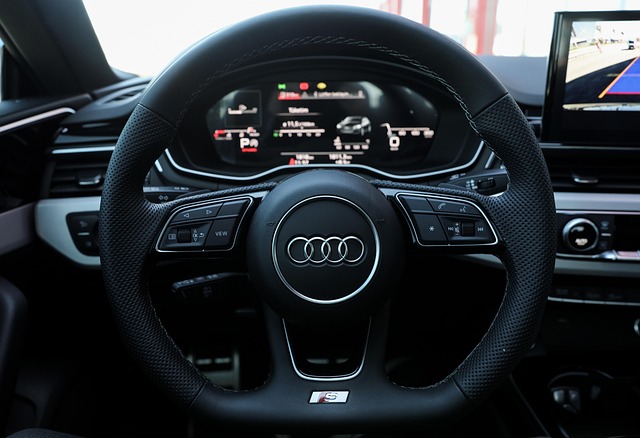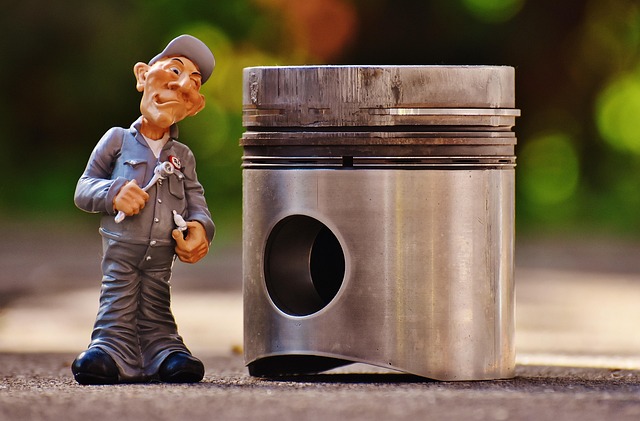Looking to register your car in California? This comprehensive guide walks you through every step, from understanding eligibility requirements to securing your license plate. We’ll break down the process into simple sections, including gathering essential documents, performing a DMV VIN verification, and completing the registration application online or in-person. By following these steps, you’ll be on your way to legal California car ownership in no time.
- Understand Eligibility Requirements for Car Registration in California
- Gather Necessary Documents for Vehicle Registration
- Perform DMV VIN Verification Step-by-Step
- Complete Online or In-Person Car Registration Application
- Pay California Vehicle Registration Fees and Obtain License Plate
Understand Eligibility Requirements for Car Registration in California

Before you begin the registration process, it’s crucial to understand the eligibility requirements for car registration in California. Your vehicle must be legally imported and meet safety standards set by the California Department of Motor Vehicles (DMV). Additionally, the car’s identity, often confirmed through a DMV VIN verification, must match the details provided on necessary documents. This process ensures that only legitimate vehicles are registered within the state.
A key aspect is ensuring your vehicle’s eligibility for registration, which can be facilitated by mobile VIN inspection and verification services. These services, offered by reliable providers, allow you to complete the initial VIN check conveniently. By utilizing a mobile vin verifier, you can streamline the preparation phase, making it easier to navigate the California car registration process.
Gather Necessary Documents for Vehicle Registration

Before registering your car in California, make sure to gather all the essential documents required by the Department of Motor Vehicles (DMV). This process is crucial for a smooth and efficient registration experience. You’ll need proof of ownership, typically through a vehicle title document, as well as valid identification cards or passports for each driver listed on the registration. Don’t forget to bring along your car’s registration from its previous state, if applicable, since the DMV will require this information during the vin verification process.
Additionally, a mobile vin verifier or conducting a manual vin inspection can be beneficial. The vehicle identification number (VIN) is a unique code that can provide valuable details about your car’s history. By using a mobile vin scanner or performing an inspection yourself, you can ensure that there are no outstanding issues or discrepancies associated with the vehicle. This step is particularly important in California, where strict regulations are in place to maintain road safety and ensure all vehicles meet the necessary standards.
Perform DMV VIN Verification Step-by-Step

To start the registration process in California, the first step is to perform a DMV VIN verification. Begin by scheduling an appointment at your local California Department of Motor Vehicles (DMV) office or using their online services. Upon arrival, take your vehicle and its necessary documents with you. The DMV will need proof of ownership, insurance, and identification.
During the appointment, a DMV inspector will conduct a thorough vin inspection of your car. This involves checking the Vehicle Identification Number (VIN) against their records to ensure the vehicle’s history is clear and matches the details provided. If everything checks out, you’ll be issued a Certificate of Vehicle Inspection, which is a crucial document for completing the registration. For those who prefer convenience, there are also mobile vin verifier services available that can streamline this process by providing instant verifications without the need to visit a DMV office.
Complete Online or In-Person Car Registration Application

Registering a car in California involves completing an application, either online or in-person, at the Department of Motor Vehicles (DMV). The process begins with gathering essential documents and information, including proof of ownership, valid identification, and vehicle insurance. Once prepared, you can choose between two convenient methods: utilizing the DMV’s online platform or visiting a local field office.
When opting for an online registration, ensure you have your Vehicle Identification Number (VIN) readily available as it will be required for verification purposes, commonly conducted through a DMV vin verification. Alternatively, consider scheduling a mobile vin inspection if preferred, allowing a DMV inspector to perform the necessary checks at your convenience. This method is equally effective for in-person registration, where you’ll fill out forms and provide relevant documentation to complete the process.
Pay California Vehicle Registration Fees and Obtain License Plate

After completing your California vehicle registration application at the DMV or online, the next step is to pay the required fees. These include the base registration fee as well as any additional charges based on your vehicle’s type and emissions status. Once your payment is processed, you’ll receive a temporary paper plate that you must display on your vehicle until the permanent license plate arrives in the mail.
To ensure a smooth process, many individuals opt for a mobile vin verification service. These services allow you to check your vehicle’s history and verify its VIN (Vehicle Identification Number) online or through a mobile app before and during the registration process. A mobile vin inspector can also inspect your car remotely, confirming necessary details and reducing potential errors, delays, or additional charges at the DMV.
Registering a car in California involves understanding eligibility requirements, gathering essential documents, and completing a straightforward application process. After ensuring you meet all criteria, start with the crucial DMV VIN verification step to ensure your vehicle’s authenticity. Once verified, you can either submit the application online or in-person, accompanied by necessary paperwork and fees. Upon approval, you’ll receive your California license plate, marking a successful registration for your new vehicle.
